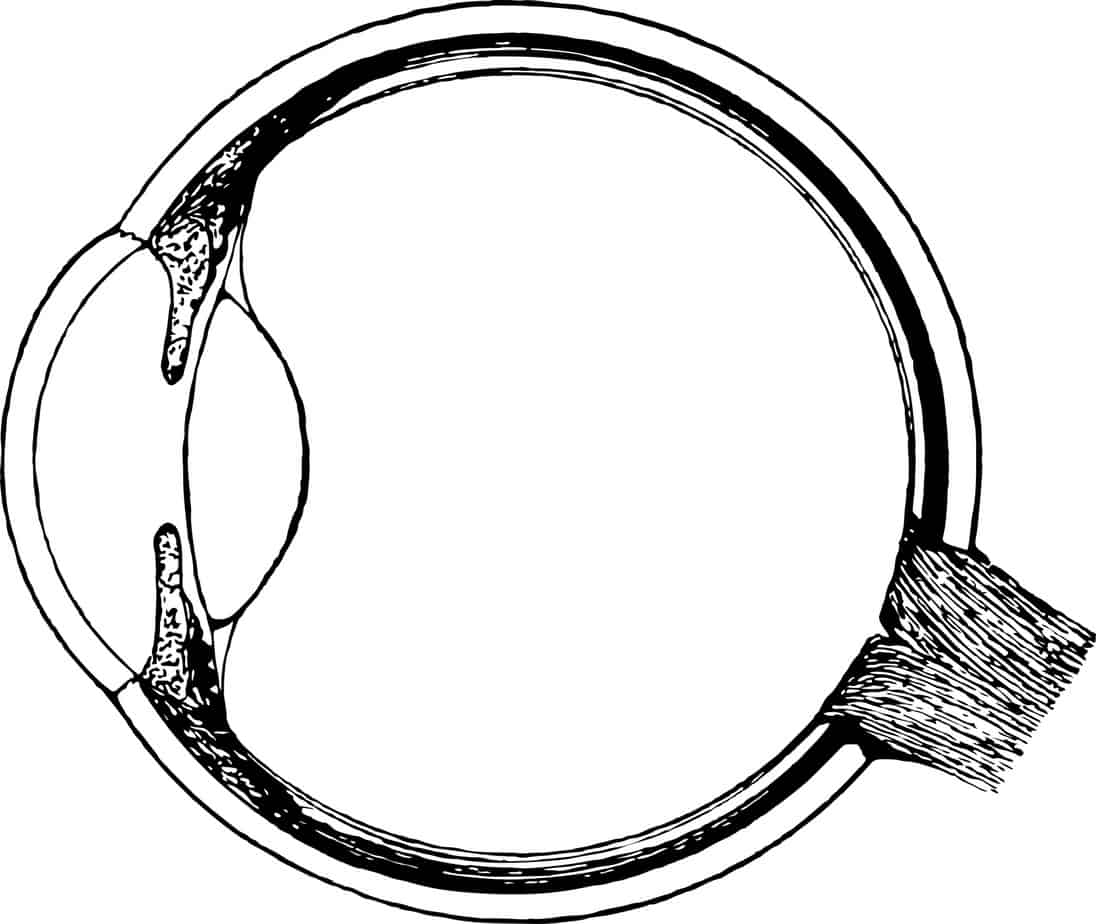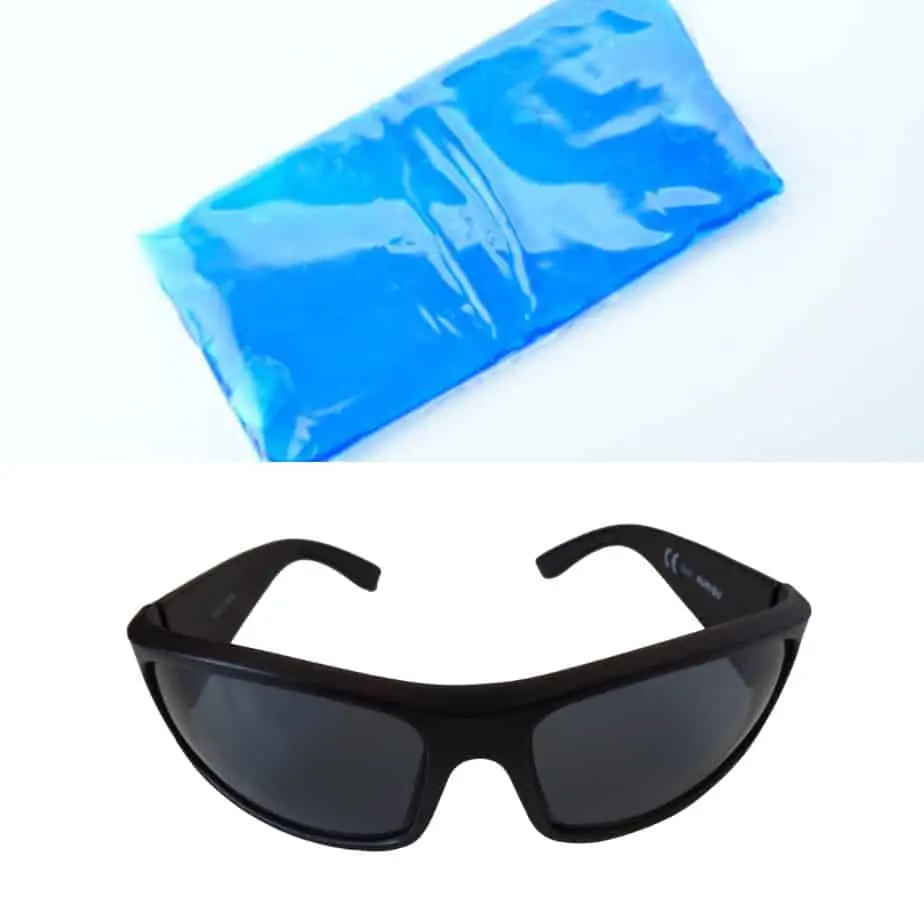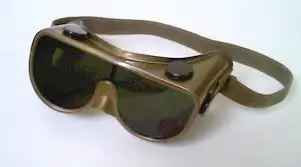Welders eye is a dangerous medical condition, and an unfortunate side effect of improper care and protection while welding. Even the most conscientious welders can fall prey to this condition when prolonged exposure or damage builds up within the eye itself.
The first line of defense against welders eye is utilizing the right equipment. We’ve previously conducted a welding glasses review and a welding lens review, as well as featured the best auto darkening welding helmet. Equipment like this can save your eyes from irreparable damage due to the flash of the welding arc, but there are also ways to detect and treat symptoms if they do occur.
Welders Eye Flash Burn - Prevention and Treatment
The technical term for welders eye is photokeratitis or ultraviolet keratitis.
It is caused by overexposure or insufficient protection from UV rays affecting the eye, either from natural or artificial sources.
It is similar in nature to a sunburn, only instead of affecting the skin it affects the cornea of the eye.
A natural source could simply be looking directly at the sun without protective gear, and a common artificial source among welders is the arc produced by the welding torch. This is why it is also called welders eye (other names include snow blindness, arc eye, sandman’s eye, or flash burns).
There are ways to prevent this kind of damage to the eye. Limited exposure is always the best remedy, which lessens the chance that the ultraviolet radiation can cause lasting harm. However, exposure to this kind of light is inevitable for welders, so utilizing proper protective equipment around the face and eyes is critical. Lenses, goggles, or visors that block UV light are commonly utilized.
There are also ways to treat burns that come with welders eye, although they mostly mask the pain associated with the condition. Damage caused by a flash burn is usually not long-lasting, although prolonged or repeated damage can cause permanent loss of vision.
Symptoms of Flash Burn
Symptoms of burnt eyes from welding typically do not appear until several hours after the damage has occurred. As a result, you may not be aware that anything is wrong until the damage is long done.
However, the main symptom is pain in and around the eye, which can range from mild to severe. Your eyes may appear bloodshot or watery, as if you had been crying. You may also experience extreme sensitivity to normal light, or have blurry vision.
Your eyes may also feel irritated, as if you have something in your eye. Some experience discomfort as if something like sand is stuck in the eye.
These symptoms may dissipate after a short time, as the eye continually heals itself. However, over time, the damage to the eye may become permanent, even with protective gear. No protection is perfect, and the cumulative effect could result in partial or complete blindness. This is one reason that visual acuity tests are required for all certified welding inspectors every three years.
Causes of Flash Burn
Welders eye, or flash burn, is caused by exposure of the cornea to ultraviolet radiation. The cornea is the clear window of tissue on the front of the eyeball, sitting directly on top of the iris (the colored part of your eye). It focuses light on the retina (the black part of your eye) and protects the inner parts of your eyeball. It acts as skin does to our other bodily tissues and organs.
A flash burn is radiation damage to this corneal layer. It can occur from a welding torch, but can be more commonly found in other artificial environments, such as:
Perhaps the most common natural source of UV radiation is direct sunlight. In most cases this occurs from looking directly at the sun, but exposure can also take place if the sun reflects off of water or snow. This is why many that live in arctic environments or on the water wear protective sunglasses that block all UV light.
Taking Care of Yourself at Home After a Flash Burn
The best treatment for a weld flash burn is to seek medical attention immediately once you present with symptoms. Pain relievers and other prescribed medications can help deal with the pain, and medicated eyedrops can help the eye regain and retain moisture to facilitate healing. However, there are also remedies you can use at home to alleviate the symptoms of welders flash.
Simple remedies as an ice pack or wet cloth can help with the pain associated with a flash burn. This can heal the burning sensation in the skin around the eyes, and can provide an extra layer of protection for the eyes themselves. Keeping the eyes covered with UV-blocking welding glasses by Miller, for example, is helpful, especially when the burn symptoms are most severe. Even wearing an eye patch over the affected eye can provide an additional layer of protection.
There are also home remedies that have proven effective in dealing with the pain. Some recommend a drop of milk in each eye, or covering the eyes with sliced cucumber, or warmed and moistened tea bags. The reason for this is that these substances are typically high in antioxidants or enzymes that naturally relieve inflammation.
Medicated substances like Vicks Vaporub or aloe vera can also alleviate inflammation, and their cooling properties can often bring immediate relief. However, they should never be applied directly to the eye itself.
Treatment for Eye Flash Burn
A doctor may prescribe a medication to be used over a short-term period to relieve the pain from a welding eyes’ burn. The pain typically last for no more than a day, so be sure to talk with your doctor about the right dosage and timing for this type of prescription.
If you wear contact lenses, do not wear them until the cornea has fully healed. Placing a contact lens on the cornea can wear away with remains, and potentially cause further damage to other parts of your eyes. Use corrective lenses (glasses) if needed.
A doctor may use anesthetic eye drops to examine the eyes for damage. They are typically used to examine your eye using a specialized dye that can only be seen under certain light conditions. However, they should not be used as a regular remedy. They prevent the natural healing processes to the cornea and can cause lasting damage to the eye, up to and including total blindness.
Occasionally, your doctor may prescribe a follow-up appointment to check your progress. Be sure to take advantage of this in caring for your eyes.
If you follow a proper care regimen after symptoms occur, your eyes can heal after one or two days, and no scar tissue is likely to form. However, repeated exposure and damage could cause an infection or a buildup of scar tissue which can lead to loss of vision.
When to Seek Urgent Medical Help for Welders Eye Flash Burn
In general, the rule is to always seek medical help when experiencing symptoms with your eyesight. Your eyes are every bit as valuable as your welding equipment itself, and as with any part of your body it must be properly taken care of in order to maintain its usefulness.
If you have a history of experiencing welders eye, do not hesitate to see a doctor, even if you know what home remedies are effective for you. There may be stronger symptoms, such as:
- Blurred vision that persists, not due to eye drops or ointment
- A glare in your eyes that progressive worsens
- Pain that does not go away but increases over time
If any of these symptoms occur, a visit to an emergency room is absolutely warranted. These may be a sign of more permanent damage to your eyes, or even a sign of infection after the initial damage has worn off.
Prevention of Flash Burn
Common sense protective tools are the best protection against weld arc flash and other welding hazards. This includes protective goggles and a face shield that completely covers your eyes. Always wear sunglasses with UV protection when going outdoors, and take immediate steps if you feel any symptoms like pain or discomfort.
When looking at UV protection, be sure that your equipment blocks UVA and UVB radiation. These are two different types of ultraviolet light, and can cause different kinds of damage. Check the safety ratings on your protective equipment to ensure that they protect against both kinds of UV light.
Even a simple step like laying charcoal underneath your eyes can help dissipate the UV spectrum. This prevents even slight reflection from your face; athletes do this to keep from squinting for this very reason, and it makes your vision clearer while you work.
While it is impossible to avoid looking at the flash from the arc as you weld, you can avoid weld flash eyes by using these preventative steps to keep damage from occurring, and by seeking medical attention and engaging in restorative care after pain occurs.
FAQs
1. Can you go blind from welders flash?
When welders fail to protect their eyes properly from the arc, they frequently develop welder's flash, or photokeratitis, a disorder caused by prolonged exposure to high ultraviolet light that results in temporary blindness and considerable discomfort. Eye injuries that are more severe can result in permanent blindness.
2. How long does arc eye last?
Flash burns are similar to sunburn in the eye and can occur in both eyes. Your cornea can typically mend within one to two days and without leaving a scar. Any UV radiation can cause it, but the most prevalent source is welding torches. That is why it is occasionally referred to as 'welder's flash' or 'arc eye.'
3. How far away can welding hurt your eyes?
fifty feet
Additionally, welders are not the only workers who face danger. While the welding arc is the primary source of UVR, other employees in the region can experience eye injury from UVR reflecting off glossy surfaces, pavement, or unpainted metals up to 50 feet away.
4. Does welding mess up your eyes?
Long-term exposure to infrared radiation can heat the lens of the eye and cause cataracts. The visible light produced by welding operations is highly intense. It can surpass the iris of the eye's ability to close sufficiently and swiftly enough to restrict the amount of light reaching the retina.
5. How do you treat welders eye?
Suggestions include the following:
- Take a pain reliever such as paracetamol, ibuprofen, or codeine.
- Avoid contact lenses until your eyes have healed completely.
- If your eyes are sensitive to light, wear sunglasses.
- Use artificial tears or lubricants to alleviate any eye pain.






